
I distinctively remember this phase toward the end of elementary school when brands suddenly became important.
You’d be outside playing basketball at recess and someone would exclaim, “Wow, check out so-and-so’s new sneakers — Air Jordans!”
Or you’d be rocking your awesome green sweater vest to class and someone would ask, “Where’d you get that awesome green sweater vest? The Gap? Abercrombie & Fitch?”
Prior to the 4th or 5th grade, I don’t remember my friends and I ever caring about the brands we surrounded ourselves with.
Back then, clothes were clothes. Toys were toys.
Wearing OshKosh B’Gosh didn’t earn you street cred as a 6-year-old. Neither did swearing loyalty to one toy brand over another.
There weren’t gangs of Playskool kids squaring off against gangs of Little Tikes kids.
At that age, you could understand that different products and companies were branded, in the sense that they had different names and logos. But you couldn’t necessarily understand (and/or you didn’t care about) the power and social influence brands could have — until you experienced that power and influence first-hand.
For me, the bike brand Mongoose would provide that first-hand experience.
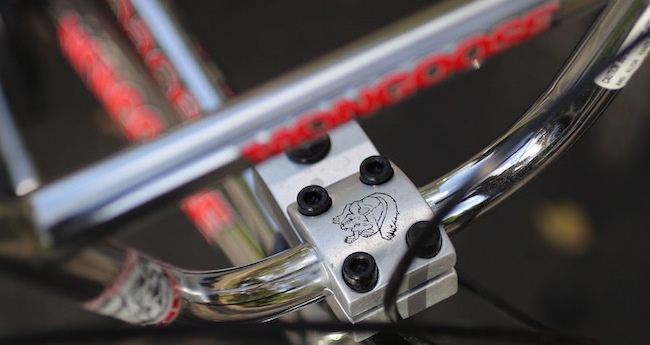
(Image source: Re-Rides Blog)
My friends and I always used to ride bikes around our neighborhood. Popping wheelies. Flying off of homemade jumps. Going down the steepest hills as fast as possible and then slamming on our brakes.
But as we got older, riding bikes became less about the riding and more about the bikes.
And at some point, it became painfully clear to me that I needed a Mongoose bike.
It was this new, unwritten rule of the neighborhood — having a Mongoose bike made you way cooler. And, inversely, not having one made you a total loser.
So l went to my mom and was like, “Mom, I need a new bike.”
And my mom was like, “You don’t need a new bike, the bike you have works perfectly fine.”
And I was like, “No mom, you don’t understand. I need a Mongoose bike. My bike is a piece of sh…”
And my mom was like, “Watch your language. And maybe you’ll get one for your birthday.”
Looking back, it’s clear that I wasn’t interested in getting a Mongoose because I needed or even wanted a new bike. I wanted a Mongoose, that brand specifically, because I wanted to reap the social benefits of having a Mongoose.
How the heck was Mongoose able to build a brand that could get me — and plenty of other kids — to act like that?
Brand-Building Demystified
Idris Mootee, CEO of Idea Couture, believes that there are four basic approaches to building great brands. I’ve summarized them here:
- The Customer Experience approach, where your brand is centered around designing and delivering incredible customer experiences. Examples: Zappos, Starbucks, Hertz.
- The Imagery approach, where your advertising images do the majority of the talking for your brand. Examples: Abercrombie & Fitch, Calvin Klein, BMW.
- The Planning approach, where you make sure your positioning covers all profitable/emerging segments. This approach is less about art and expression, and more about science and precision. Examples: P&G, Pepsi, Gillette.
- The Self-Expression approach, where consumers actively participate in creating meaning for your brand, and use your brand to help define their own personal brands. Examples: Prada, Louis Vuitton, “Chuck Taylors” (Converse).
To that final group of examples I’d also add Mongoose.
Just read Mootee’s description of the self-expression approach to brand-building, it describes my experience with Mongoose to a T:
Consumers in these categories do not want to use the brand to endorse or reflect his or her personality; rather it contributes to building a personal or individual brand … The consumer uses the brand as a tool or status symbol, then adds in his or her own hallmark to express who they are, who they want others to think they are and how they see the world.
As Mongoose owners, my friends and I used several different elements to “add our own hallmark” to the bikes. These included decorative hubcaps (the skull-and-crossbones variety was a perennial favorite), number plates, and bike pads or pad sets.
FYI: Number plates go on the front of your handlebars and are for organized BMX racing. My friends and I all had them on our Mongooses … even though none of us actually raced.
A pad set is sort of like a tuxedo for your bike. They come in all different colors. (See example below.)
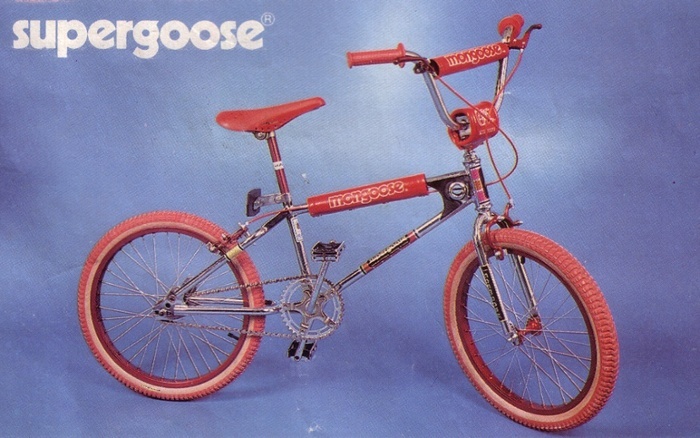
(Image source: BMX Society)
Mongoose thrived using this self-expression-focused approach to brand-building. But unlike luxury brands, which tend to use the same approach, Mongoose didn’t became a status symbol for neighborhood kids because it was the most expensive, most high-end bike available.
The brand became a status symbol because it had a real personality, an attitude that kids wanted to associate with.
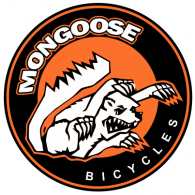
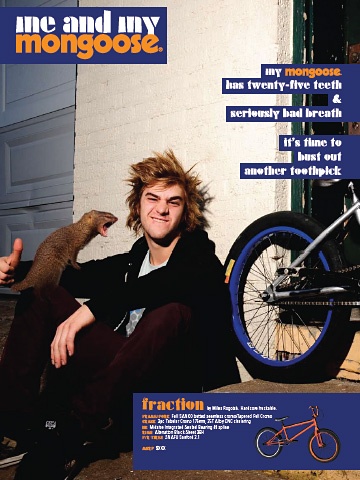
(Image source: antonycooke.com)
Mongoose was rebellious. And fearless. And wild. From its logo, to its advertisements, to the look of its bikes, to the kids who rode the bikes, everything was connected. There was this universal feeling the brand created.
And that’s what branding is. It’s not simply designing a logo, it’s creating that shared feeling.
Here’s how Alina Wheeler, author of Designing Brand Identity, explains it:
Brand is the promise, the big idea, and expectations that reside in each customer’s mind about a product, service, or company. Branding is about making an emotional connection. People fall in love with brands — they trust them, develop strong loyalties, buy them, and believe in their superiority. The brand is shorthand: it stands for something and demonstrates it.
Of course, self-expression is just one of the four approaches to making that emotional connection and building a great brand. And there’s no reason these approaches have to be mutually exclusive.
In addition to encouraging self-expression, you can provide amazing customer service experiences, and you can produce great-looking imagery that represents your brand, and you can plan carefully and make sure you’re connecting with the right audience at the right time.
There’s no single, correct way to build a brand. But based on your particular product and industry, it’s probably going to make sense to lean more heavily into certain approaches over others.
For example, Zappos is all about providing the best experience possible to their customers. That’s their bread and butter. Targeted ad campaigns and well-designed visuals certainly contribute to their brand-building efforts as well, but as an online shoe store, it makes sense for them to focus first and foremost on making that retail experience as amazing as possible.
And that’s how Zappos has built its brand: through offering free shipping, and free returns, and through delivering headline-worthy levels of customer service.
Clothing retailer Abercrombie & Fitch, meanwhile, has relied more heavily on the imagery approach to brand-building. While their stores certainly deliver a unique experience (one that’s soaked in cologne), those black-and-white photos of scantily clad models are what have really come to define the brand. The imagery drives the emotional response.
Finally, there are brands like Budweiser, which use planning as their primary approach. True, Budweiser has iconic imagery: the Clydesdales, the frogs. But Budweiser showed us that imagery via Super Bowl commercials, and via other carefully placed ads and sponsorships.
By getting in front of us at the right place, at the right time, with the right product, Budweiser has been able to not only stir our emotions, but become part of the American zeitgeist.
The Most Important Thing
Regardless of the approach you take to brand-building, the most important thing to remember is that your brand is not a symbol that belongs to your company, it’s a feeling that belongs to your customers and your fans.
In a presentation that Actifio CMO Mike Troiano gave last year on the essence of branding, he put up a photo of the Foo Fighters playing a concert and asked, “Where’s the brand in this photo?”
The answer wasn’t the over-sized, illuminated Foo Fighters logo, or even Foo Fighters’ lead singer Dave Grohl. The answer was that the brand was out in the heart and minds of the audience.
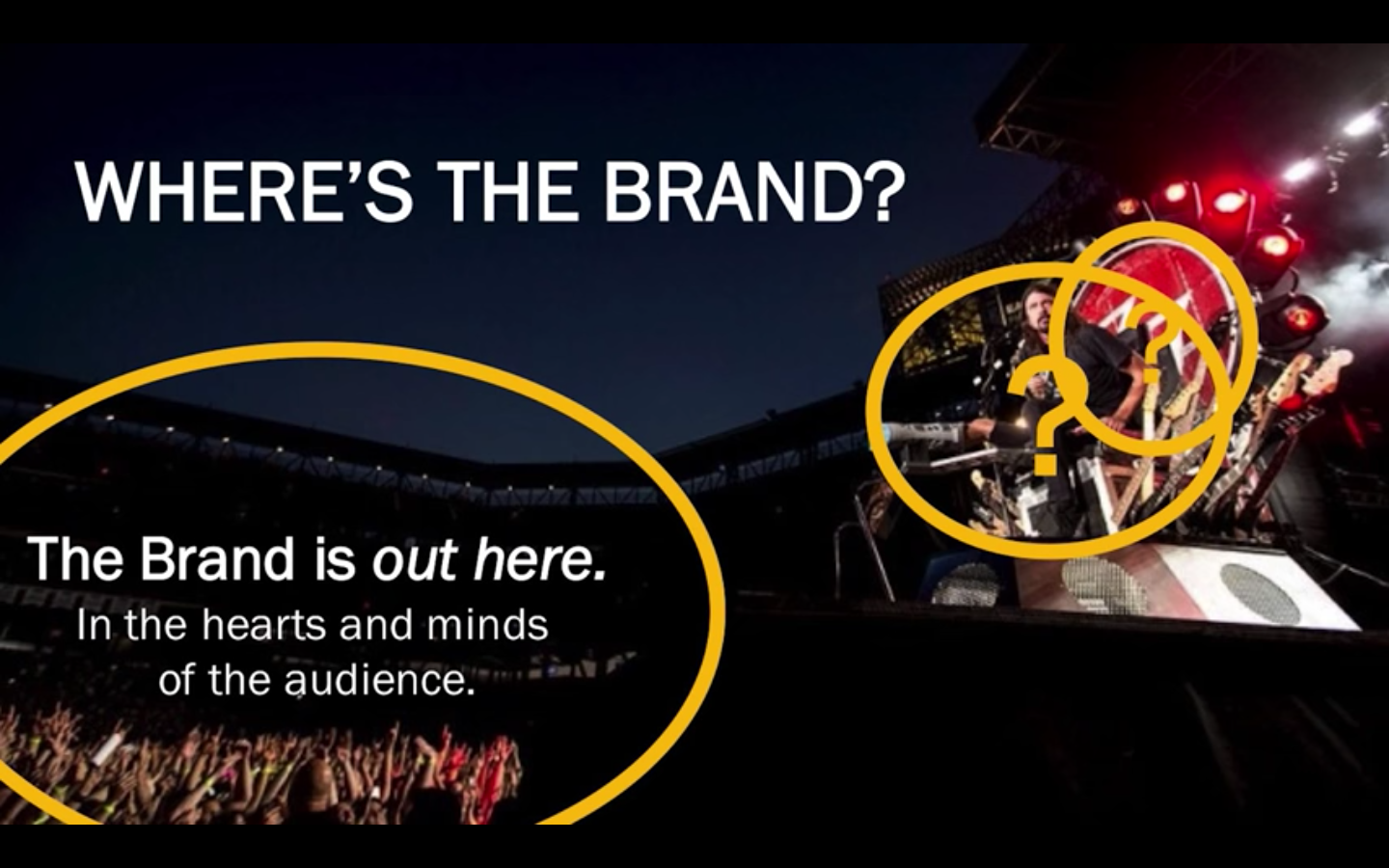
So to all my fellow marketers who are working on brand-building, remember: your customers are the real stars of the show — not you, not your logo, not that clever tagline you came up with.
In order for your brand-building efforts to be effective, they need to reflect the desires and attitudes of your customers.



